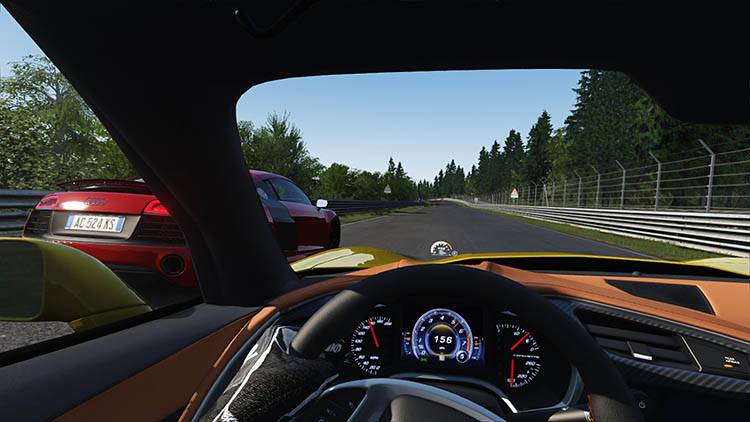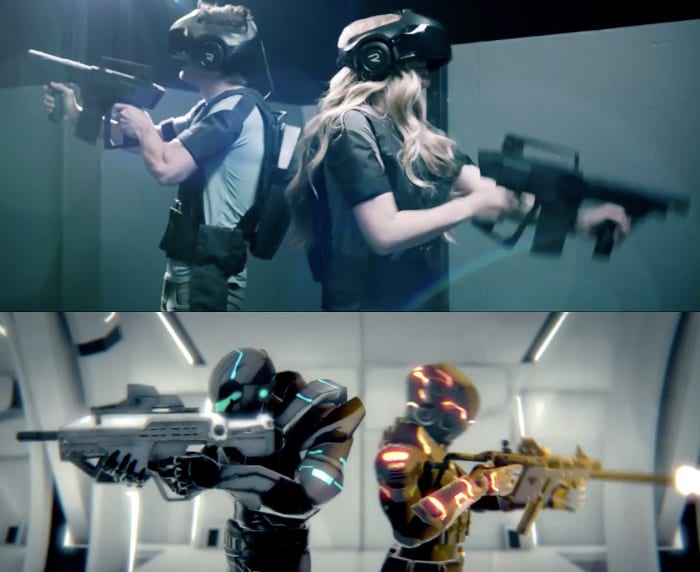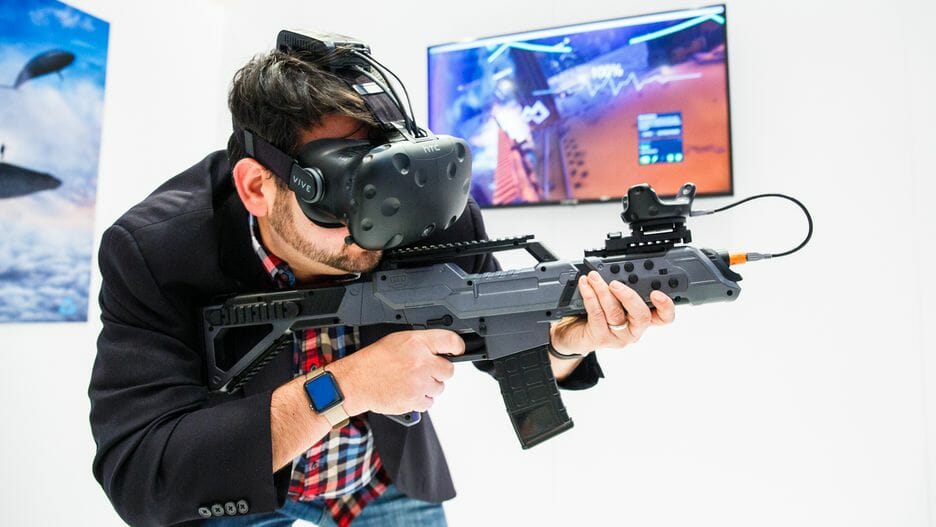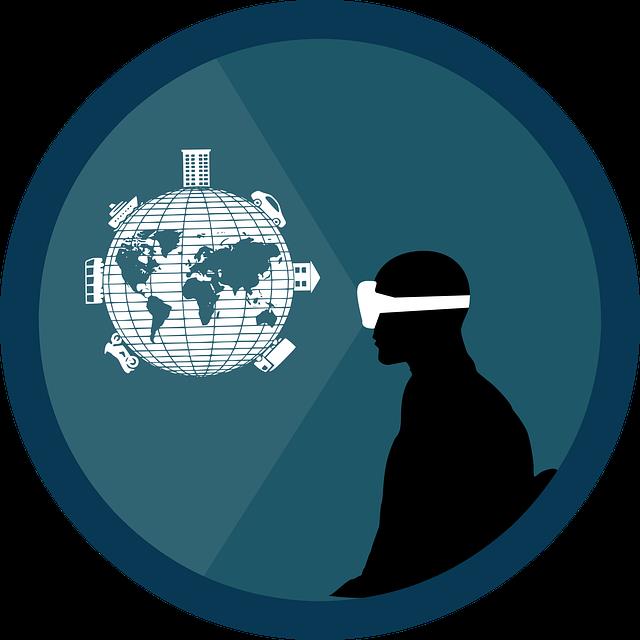
Welcome to the world of VR gaming development, where creativity meets technology and innovation.
In this article, we explore the seven pillars that form the foundation of creating immersive virtual reality experiences.
From game design to programming, art to sound, testing to monetization, we delve into the technical, creative, and analytical aspects of each pillar.
Whether you're a seasoned developer or an aspiring enthusiast, join us as we unlock the secrets to success in the captivating world of VR gaming.
Creating VR Games
When creating VR games, developers must carefully consider the immersive experiences they want to provide to players.
With the VR game industry experiencing significant growth, developers face unique challenges in meeting the expectations of players who desire freedom within virtual worlds. One of the main challenges in VR game development is ensuring smooth and comfortable gameplay, as issues like motion sickness can greatly impact the player's experience.
Additionally, creating realistic and visually stunning environments requires expertise in art and design, as well as optimizations for performance. Sound design also plays a crucial role in enhancing immersion, as it helps create a sense of presence within the virtual world.

VR Game Design
When it comes to VR game design, there are two key points that developers must consider: user experience and immersion.
User experience considerations involve creating a seamless and intuitive interface that allows players to easily navigate and interact within the virtual environment.
Immersion, on the other hand, involves designing the game in a way that fully engages the player's senses and transports them into the virtual world, making them feel as if they are truly a part of the experience.
User Experience Considerations
Designing a VR game requires careful consideration of user experience to ensure an immersive and engaging gameplay. To create an exceptional user experience, developers must take into account various factors. Here are five key considerations:
- Accessibility considerations: VR games should be designed with accessibility in mind, ensuring that people with disabilities can fully enjoy the experience. This includes providing options for different control schemes, accommodating visual impairments, and considering physical limitations.
- Motion sickness mitigation: Motion sickness is a common issue in VR gaming. Developers need to implement techniques to reduce or eliminate this discomfort, such as optimizing frame rates, implementing smooth locomotion, and offering comfort settings that allow players to customize their experience.
- Intuitive controls: VR games should have intuitive controls that are easy to understand and use, allowing players to interact with the virtual environment seamlessly. This can involve implementing natural gestures, intuitive button mappings, and haptic feedback.
- Clear user interface: The user interface in VR games should be unobtrusive, easy to navigate, and visually appealing. It should provide clear guidance and feedback to help players understand their objectives and progress in the game.
- Immersive audio: Sound plays a crucial role in VR games, enhancing the overall experience and creating a sense of presence. Developers should focus on spatial audio design, utilizing 3D sound to immerse players in the virtual world.
Immersion and Interactivity
To achieve a truly immersive and interactive experience in VR game design, developers must prioritize the integration of immersive technologies and interactive gameplay mechanics.
Immersion is enhanced through the implementation of haptic feedback, which provides users with tactile sensations and enhances their sense of presence in the virtual environment. Various locomotion techniques can also contribute to immersion by allowing players to navigate the virtual world in ways that feel natural and intuitive. These techniques include teleportation, where players can instantly move to different locations, and smooth locomotion, which simulates natural movement.
Additionally, interactivity plays a crucial role in keeping players engaged. This can be achieved through interactive objects and environments, as well as meaningful choices and consequences within the game. By focusing on these aspects, developers can create VR games that truly captivate and engage players, providing them with a sense of freedom and agency within the virtual world.

VR Game Programming
VR game programming is a crucial aspect of creating immersive virtual reality experiences. It involves utilizing essential programming languages, such as C++ and C#, to develop the underlying mechanics and interactivity of the game.
Additionally, programmers must employ performance optimization techniques to ensure smooth gameplay and minimize latency, enhancing the overall user experience.
Essential Programming Languages
Programming languages play a crucial role in the development of VR games. They enable developers to create immersive virtual reality experiences by providing the necessary tools and frameworks.
Here are five essential programming languages for VR game programming:
- C++: Known for its performance and efficiency, C++ is widely used in VR game development for its ability to directly interface with hardware and optimize game performance.
- C#: Developed by Microsoft, C# is popular for developing VR games using Unity, a widely used game engine for VR development.
- JavaScript: Used for web-based VR games, JavaScript allows developers to create interactive and immersive experiences that can be accessed through web browsers.
- Python: Python is known for its simplicity and ease of use. It is often used for scripting and automation tasks in VR game development.
- UnrealScript: Although less commonly used now, UnrealScript was the programming language for the Unreal Engine and was popular for developing VR games in the past.
These programming languages provide the foundation for creating virtual reality technology and enable developers to bring their creative visions to life in the virtual world.
Game Mechanics and Interactivity
Game mechanics and interactivity play a crucial role in creating engaging and immersive VR gaming experiences. Game mechanics refer to the rules, systems, and structures that govern how the game works, while interactivity refers to the player's ability to interact with the virtual world.
By designing compelling game mechanics, developers can create challenges, rewards, and opportunities for exploration that keep players engaged and motivated. Additionally, interactivity allows players to have agency within the virtual world, making their actions and decisions feel impactful and meaningful.

Whether it's through complex puzzles, dynamic environments, or interactive objects, game mechanics and interactivity contribute to a sense of presence and immersion, enhancing the overall VR gaming experience.
Performance optimization techniques in VR game programming are essential for maximizing the immersive experience and ensuring smooth gameplay. To achieve optimal performance, developers employ various rendering techniques and consider the hardware requirements of VR devices. Here are five key techniques used in performance optimization:
- Level of Detail (LOD) system: This technique adjusts the level of detail in objects based on their distance from the player, reducing rendering workload and improving performance.
- Occlusion culling: By not rendering objects that are hidden or obstructed from the player's view, developers can significantly reduce the number of objects that need to be rendered, improving overall performance.
- Texture compression: Compressing textures reduces memory usage and improves rendering performance.
- Dynamic resolution scaling: This technique adjusts the resolution of the game based on the performance of the hardware, ensuring a smooth gameplay experience even on less powerful devices.
- Code optimization: Optimizing the game's code improves execution speed and reduces processing requirements, resulting in better performance.
VR Game Art
The creation of visually stunning and immersive virtual reality (VR) experiences relies heavily on the meticulous and creative process of VR game art.
VR game art encompasses various aspects, including 3D modeling techniques, texturing, lighting, and animation, all aimed at bringing virtual worlds to life.
Artists use specialized software to sculpt and manipulate 3D models, creating detailed and realistic environments, characters, and objects. They employ techniques such as polygon modeling, sculpting, and rigging to ensure that the virtual assets are optimized for real-time rendering in VR.
Texturing adds depth and realism to these models, while lighting techniques enhance the atmosphere and mood of the VR experience.
Animation breathes life into characters and objects, making them move and interact with the user.

Through the careful application of these art techniques, VR game art plays a crucial role in captivating the audience and enhancing the overall immersion in virtual reality.
VR Game Sound
Continuing the meticulous and creative process of VR game development, sound design plays an integral role in immersing players in virtual reality experiences. The careful crafting of audio elements enhances the realism and depth of virtual worlds, making the gameplay more engaging and captivating.
Here are five important aspects of VR game sound design:
- Spatial audio: By simulating the way sound waves interact with the environment, spatial audio creates a realistic 3D audio experience, allowing players to accurately perceive the direction and distance of in-game sounds.
- Ambience and atmosphere: Sound design helps set the mood and atmosphere of the virtual world, creating a sense of presence and enhancing the overall immersion.
- Interactive audio: Dynamic and responsive audio elements that change based on the player's actions or the in-game environment can greatly enhance the sense of interactivity and realism.
- Emotional impact: Well-designed sound effects and music can evoke emotions, intensify suspense, or heighten the sense of excitement, making the gameplay more memorable and impactful.
- Accessibility: Sound design should also consider the needs of players with hearing impairments, providing alternative audio cues or subtitles to ensure everyone can enjoy the game.
VR Game Testing
As part of the meticulous process of VR game development, thorough testing is essential to ensure the functionality, stability, and immersive experience of virtual reality games.
VR game testing involves various aspects, such as gameplay analysis and quality assurance, to identify and rectify any issues before the game is released to the public.
Gameplay analysis focuses on evaluating the mechanics, controls, and overall gameplay experience to ensure it is smooth, intuitive, and enjoyable for the players.
Quality assurance, on the other hand, involves rigorous testing of the game to identify bugs, glitches, and performance issues. Testers use specialized tools and techniques to simulate different scenarios and environments, ensuring that the game functions optimally across various VR platforms.

Ultimately, thorough VR game testing is crucial for delivering a seamless and immersive gaming experience that captivates players and meets their expectations.
Monetizing VR Games
Developing VR games involves the monetization of virtual reality experiences. To effectively monetize VR games, developers can employ various strategies that cater to the needs of their audience. Here are five key elements to consider when monetizing VR games:
- In-app purchases: Offering virtual goods or additional content for purchase within the game can provide players with a sense of progression and customization options.
- Virtual currency: Implementing a virtual currency system allows players to earn or purchase digital money to spend on in-game items or upgrades.
- Sponsorships and partnerships: Collaborating with brands or other developers for promotional campaigns and cross-promotion can generate additional revenue streams.
- Premium game models: Releasing a paid version of the game without any additional monetization features can attract players who prefer a one-time purchase.
- Advertisements: Incorporating non-intrusive ads into the game can generate revenue through impressions or clicks.
Frequently Asked Questions
What Hardware and Software Is Required to Develop VR Games?
To develop VR games, you need specific hardware requirements such as a high-performance computer, VR headset, and controllers. In terms of software tools, developers utilize game engines like Unity or Unreal Engine, along with programming languages like C# or C++.
How Long Does It Typically Take to Develop a VR Game?
Developing a VR game involves various key steps, such as concept design, prototyping, asset creation, coding, and testing. The timeline for VR game development can vary depending on the complexity of the game, but it usually takes several months to a year to complete.
What Are Some Common Challenges Faced in VR Game Development?
Developing VR games presents challenges such as VR game optimization to ensure smooth performance and user comfort in VR gaming. These challenges demand technical expertise, creative problem-solving, and a deep understanding of the unique requirements of virtual reality technology.
Are There Any Specific Design Considerations for Creating VR Games Compared to Traditional Games?
When creating VR games, it is crucial to consider the unique design elements and challenges that come with designing immersive experiences and implementing intuitive controls. These aspects differentiate VR games from traditional games.
When it comes to marketing and promoting VR games to a wider audience, effective strategies include leveraging social media advertising to reach potential customers and collaborating with influencers to generate buzz and increase visibility.

 Business & FinanceHealth & MedicineTechnologyLifestyle & CultureScience & EnvironmentWorld NewsPrivacy PolicyTerms And Conditions
Business & FinanceHealth & MedicineTechnologyLifestyle & CultureScience & EnvironmentWorld NewsPrivacy PolicyTerms And Conditions
